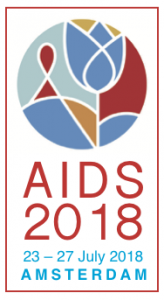Access to viral load testing increased from 14% to 61% over two years in Côte d’Ivoire
24 August 2018. Related: Conference reports, Treatment access, Guidelines, World AIDS 22 Amsterdam 2018.
An interesting poster presented results of recent scale up of access to viral load testing in rural and urban clinics in Côte d’Ivoire from 2015 to 2017.
Before 2015, viral load was available to less than 10% of HIV positive people, and was restricted to clinics in the capital Abijan and the scale-up programme used internet-enabled quantitative lab-in-the-box technology. Viral load is recommended every 6 months during the first year of ART and annually thereafter.
Between October 2015 and August 2017, almost 222,000 people received ART, with 85% 12-month retention rate. Access to at least one viral load test increased from 14% to 61%, reaching almost 135,000 people. This included 41% of HIV positive people attending clinics outside the capital. Over the same period, the number of laboratories increased from 6 to 15.
Among those with access, 74% were women and 6% were children (<14 years), with 77% (95%CI: 55 to 82) overall testing <1000 copies/mL (similar rates for men and women). Viral suppression was lowest in children and adolescents (55%) and was 67% in young adults’ (20 to 24 years) and 79% in people >25 years.
This study showed progress in increasing access to viral load testing in a low-income country and that access can be effectively broadened. This programme emphasised the importance of a strong sample transportation system and minimising reagent stock-out.
Reference
Adje-Toure C et al. Increased access to HIV viral load testing among ART patients in Côte d’Ivoire (2015 to 2017). AIDS 2018, 23-27 July 2018, Amsterdam. Poster TUPEB043.
http://programme.aids2018.org/Abstract/Abstract/10852


 Simon Collins, HIV i-Base
Simon Collins, HIV i-Base